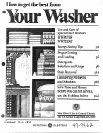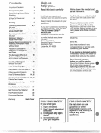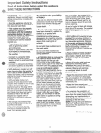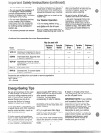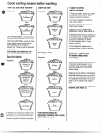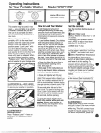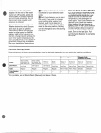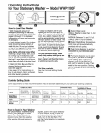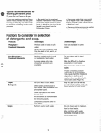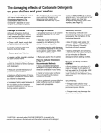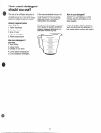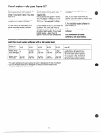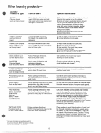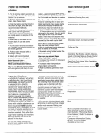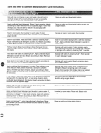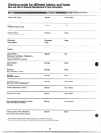
Q Do riottamperWith controls.
QDOno$operate this appliance if
it is damaged, malfunctioning,
partially ciisassemb!edf or has
missing or broken parts, including
a damaged cord or piug.
= Do not wash fiberglass articles
in your washer. Skin irritation
ccmid result from the remaining
particles that may be picked up
by clothing during subsequent
washer use.
e The laundry process cafl redl~ce
the flame retardancy of fabrics. To
avoid such a result, the garment
manufacturer’s care instructions
should be followed very carefully.
@Never climb on or stand on the
washer top.
For washer operation
~ Do not leave washer lid up
during cycle. The washer will fill
and agitate with the lid open.
For your safety, the washer lid is
locked closed during spin cycle. To
optional AccessoriesforycwrSpaeemakers
May be W3edwith
open lid during spin cycle, push
the Cycle Selector N and wait for
iid lock to release, about 30
seconds, before opening.
At end of cycle, lid lock will
release after about 30 seconds.
~ 50 NOT CHANGE CYCLE OR
MANUALLY ADVANCE CYCLE
SELECTOFtWHEN DIAL 1SOUT
Push in Cycle Selector and wait for
washer to stop. Then select new
Cycle and pull Cycle Selector to
restart.
Stationary
‘Portable
Stationary
Portable Stationary
Mode! Washer
Washer
Dryer Dryer
Dryer
Number Description
WWP1180F
WWWPI-170F
DDP1280F DDP%?70F
DDPW7’5F
WMK-30 VVall-MoLmtInstallation Kit. Use to
mount dryer to wall above washer.
x(1) x(1)
x(1)
DSR-80 Dryer Stack Rack.Supports dryer
x
x
x
in stacked installation.
VVDF430* Washer/Dryer Frame for unitized
installation. Useto mount dryer on
x
x
x
top of washer.
DSR-70 Dryer Stack Rack.
x x
x
x
WPFWI
Conversion Kit. To convert washer
to built-in installation.
x
I
Accessories are available from your dealer or service organization.
(1) May use WMK-25
*Wi—t-White
AD—Almond
We are all conscious of the need
to save energy—to protect our
country’s energy reserves and to
help us save money. There are
several things you can do to
reduce the amount of energy
needed to wash your clothes:
1. Use Hot Wash—~40° (60”C)—on
a regular basis on/y when washing
headily soiled articles—such as
work and play clothes.
2. Lhcier normal soil conditions,
wash in water above 80°F (27*C).
This generally means using the
VYa.rmWash temperature setting
cmyour washer—temperatures
approximately 95°F (35°C).If you
notice that soil has accumulated
after several consecutive
washings, use Hot Wash
occasionally, if safe for fabrics.
3. Always rinse in Cold Water. The
temperature of the rinse does not
affect cleaning.
4. Try to wash less often. Save
articles of the same type of fabric
until you have a fuil load.
5. If you must wash smaller loads,
adjust the amount of water. Small
loads should have lower water
levels.
4
& Wash in off-peak utility hours.
Your local utility can tell you which
are the off-peak hours.
IMPORTANT NOTE: if your clothes
and household items don’t look
clean and fresh after washing,
what are you apt to do? You will
probably then re-wash them... and
that means you’ll waste energy.
Remember to sort your clothes
carefully, and load them properly,
select correct cycles, use enough
detergent and choose a water
temperature warm enough to
release and get rid of soii.



